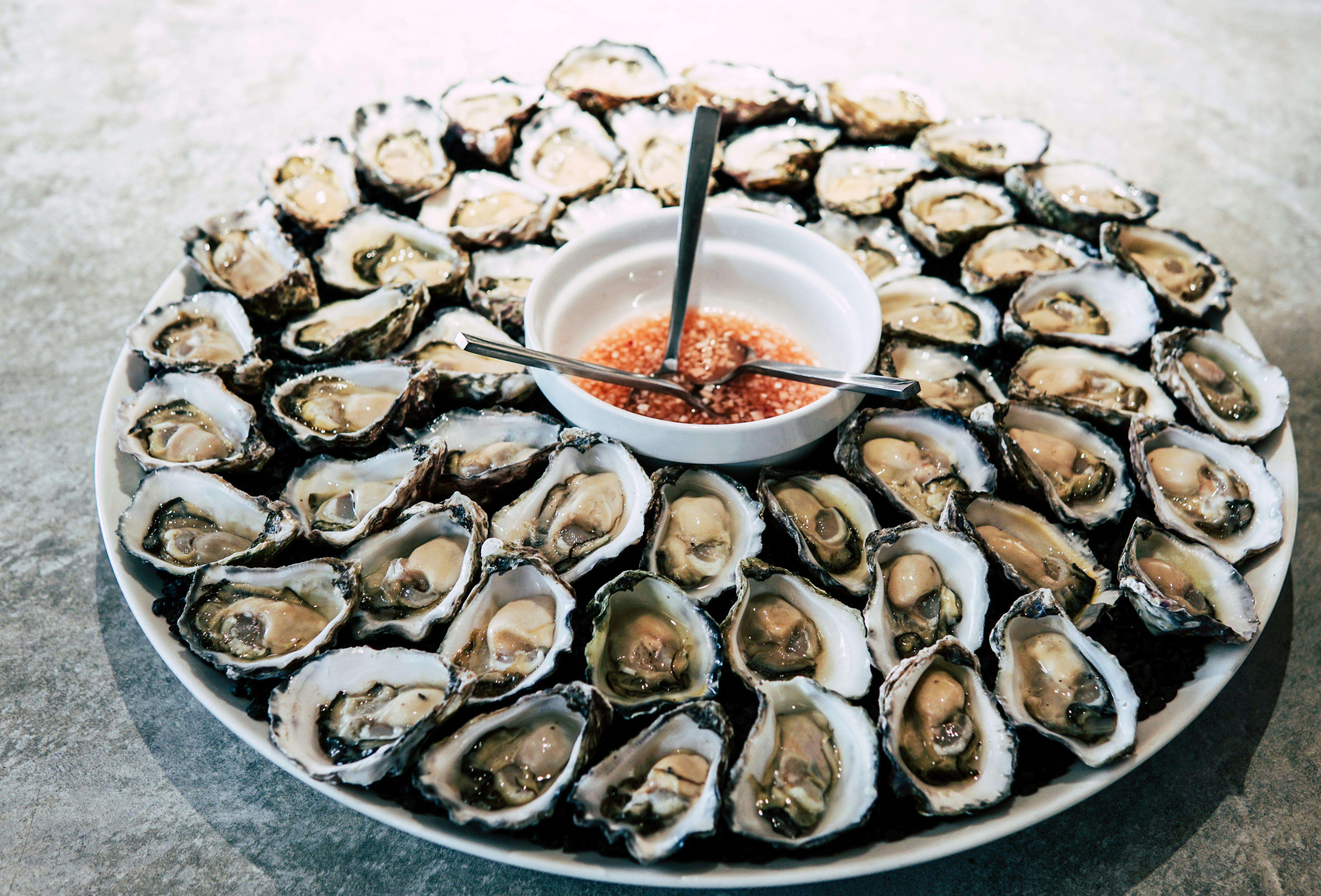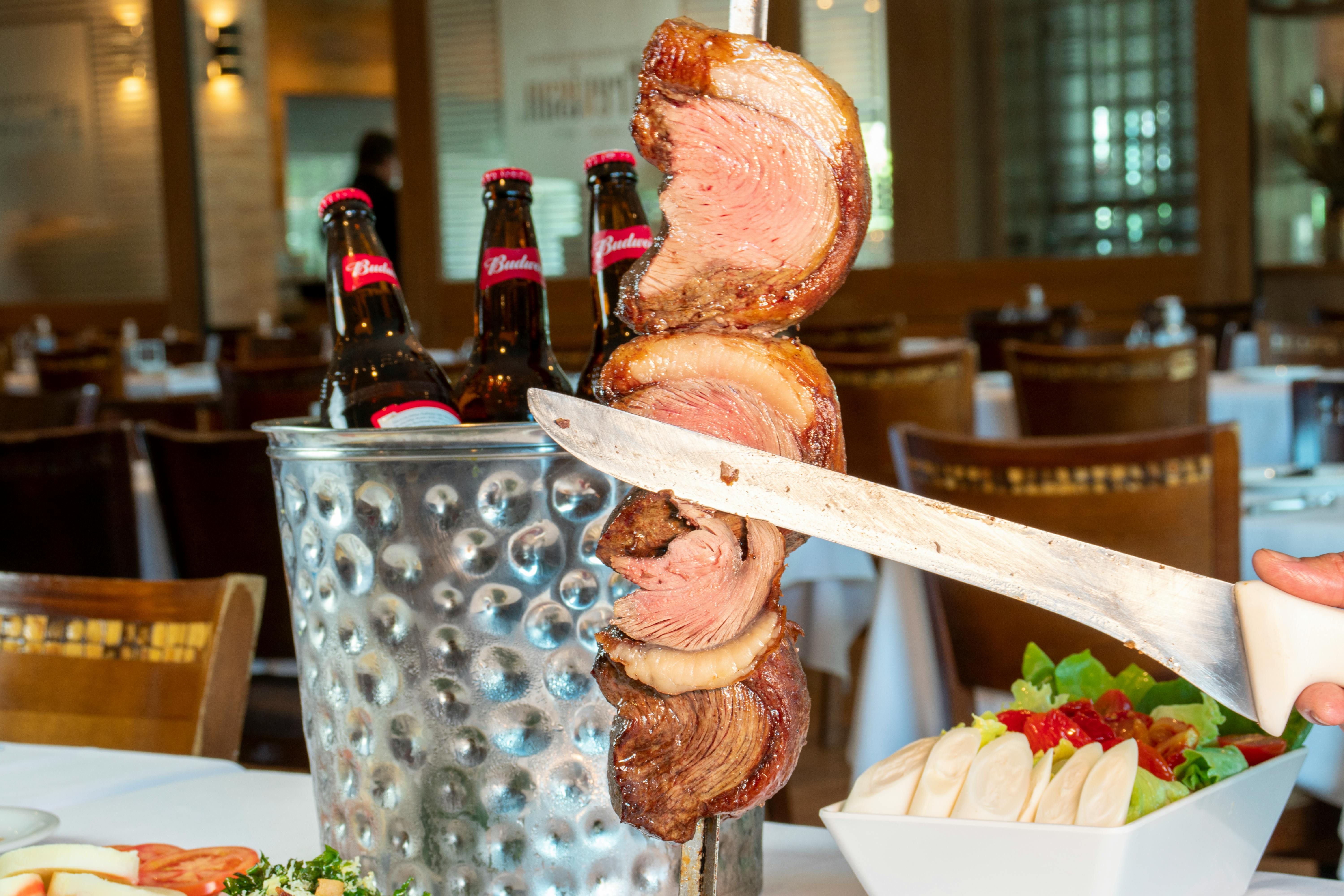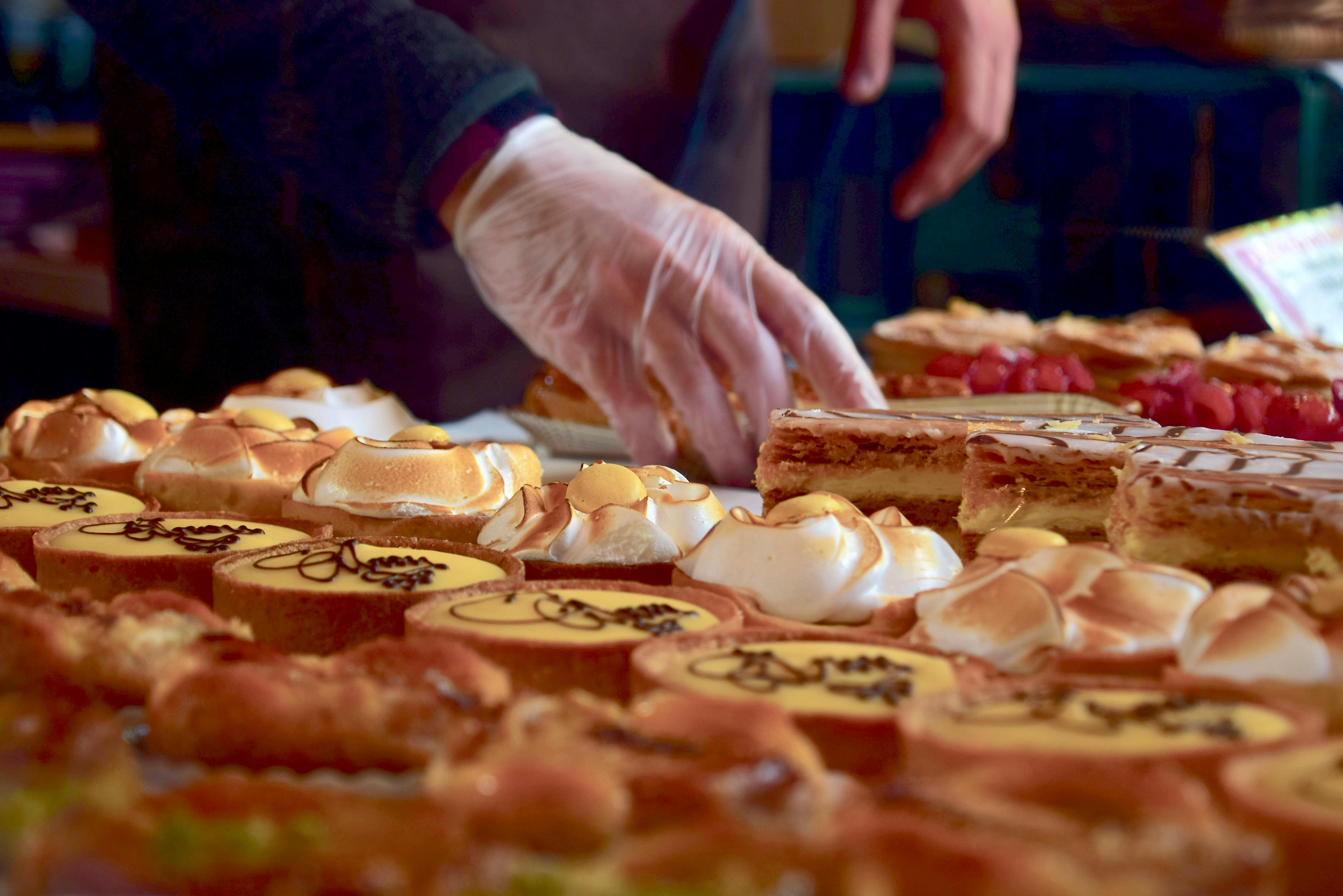Sometimes You Just Can’t Compete with the Restaurant
You know, sometimes the restaurant really does have better food. And before you jump to conclusions, pay attention to this part: I’m not at all talking about your cooking skill. I don’t care how “hard” something is to make on a technical level; you can learn anything. However, restaurants have some distinct advantages that you don’t generally get elsewhere—access to premium ingredients, teams of multiple chefs coordinating food, or availability of equipment that you can only buy with a bank loan are all perks of the restaurant that you’ll never see in your home kitchen.
Because of this, some foods really are just better in a restaurant. Here’s a list of several foods I will always prefer in a restaurant.

Sushi: We can spend hours sourcing, slicing, and assembling nigiri at home, but no matter what we do, it’s hard to beat a restaurant with access to daily deliveries of the freshest fish—often flown in daily if they’re landlocked. Sushi chefs have relationships with top-tier suppliers, so they get first dibs on the prime stuff. Us? We’re stuck with whatever sad salmon the local grocery store has. Plus, at a good sushi bar, there’s a team of people prepping rice, slicing fish, and assembling those little morsels with the speed and precision of a well-oiled machine. At home, I’m alone, likely dropping half my sticky rice on the floor and wondering why my tuna smells a little... off.
Of course, some people have a ton of fun making their own sushi, and I still do it from time to time. But if I’m looking for high-quality fish and a meal that seems almost life changing? I don’t care what Costco says is “sushi grade,” I’m going with restaurant quality.

Dim Sum: This one’s about sheer logistics. You’re talking about dozens of small, intricate dishes, each needing to be made fresh and served immediately. A restaurant has an army of chefs cranking out perfectly steamed dumplings, fluffy bao, and a wide range of other goodies at a speed you can’t hope to match. Meanwhile, at home, by the time your har gow are done, the siu mai are cold, and your bao have deflated like your hopes of pulling off an incredible party. The only way dim sum works is in a restaurant where a team can pump out fresh items non-stop. And the variety you’re getting? Nearly impossible without running yourself into the ground.

Steak: This one was really hard for me, but if I’m being totally honest, restaurant steak is the best steak. I still fancy myself a decent steak cook, but the truth is restaurants have access to beef that I can’t buy. You think you’re getting good marbling from your local butcher? Ha. These places are dealing in prime, dry-aged cuts that make my supermarket ribeye look like a malnourished cousin. And don’t even talk to me about those 1,200°F broilers that they use to get that perfect sear in under three minutes. My home grill doesn’t even come close, no matter how many times I tell myself that the cast iron skillet is “just as good.” It’s not. It’s like comparing a matchstick to a flamethrower.
And you know what? There’s nothing wrong with that. Restaurants devoted thousands of dollars to equipment and supplies so that I don’t have to. I’ll enjoy my own homemade steaks as often as ever, but if I want something that tastes like a meal for the gods, I’m going to the steakhouse.

Charcuterie: I’ve dabbled in making my own charcuterie. Spoiler: I should’ve just left it to the pros. You might throw together a charcuterie board at home with whatever Trader Joe's has on special, but a restaurant that cures its own meats? That’s next level. The process of curing and aging takes months of careful monitoring, not to mention specialized spaces for humidity and temperature control. On top of that, these places are sourcing rare cheeses, meats, and accouterments from all over the world, while I’m slapping down some pre-packaged prosciutto and feeling fancy. The sheer quality and diversity of meats on a proper restaurant board are beyond what your home fridge can handle unless you're secretly running an underground salumeria.
Restaurant charcuterie boards are works of art. They’re the culmination of lifelong discipline in multiple crafts, expertly woven together by a master with good connections. My attempts? It’s like trying to pass off Lunchables as fine dining.

Shellfish: Unless you live near the ocean and have a direct line to local fishermen, the freshness of shellfish you’ll find in restaurants is almost always superior to what you can get at home. Restaurants fly in lobsters, oysters, and scallops daily, often holding them in saltwater tanks for that perfect briny taste. By the time you bring home that vacuum-packed shrimp or whatever Costco decided was “fresh,” you’re already behind. Restaurants also have high turnover, so the seafood doesn’t linger. At home, you might let those clams sit in the fridge a little too long, turning your fancy seafood night into a potential bout of food poisoning.

Brazilian Churrascaria: Yes, you could roast a hunk of meat at home, but can you endlessly rotate 12 different cuts of beef, lamb, chicken, and pork over open flames while managing skewers and temperatures? Didn’t think so. Churrascarias specialize in this—teams of chefs rotating massive skewers, slicing meat tableside until you beg them to stop.
This is an experience built on quantity and variety, and without a fleet of chefs at your disposal, you’re not going to recreate it at home. I mean, you can try. I’m sure on one grill you can fit several different cuts and types of meat, but then you’ve blown everything you’ve had on the bank, and it would have been cheaper to just go to the fancy restaurant.

Wood-Fired Pizza: Ideal pizzas are baked at temperatures of about 900F, and your home oven just doesn’t reach that. And even if it did, you’ll smoke out your whole house. Some houses have dedicated wood-fire ovens outside, but these have traditionally been very expensive. Most people just don’t see the point. However, small, affordable pizza ovens have become a game-changer. Budget pizza ovens have become more and more popular, making them much loss cost restrictive. They have their downsides, but with some grit, your wood-fired pizzas could easily surpass the average pizzeria.

Barbecue: BBQ can seem like a long, drawn-out ordeal best left to the pitmasters who have entire setups dedicated to smoking meat. The thought of maintaining low, consistent heat for hours on end can feel like a science experiment, not to mention the skill of perfecting the rubs, marinades, and smoke infusion.
The truth is, BBQ is more about patience than it is about technical mastery. With the right smoker (or even a modified grill), you can smoke brisket or ribs that would put your local BBQ joint to shame. Restaurants are often rushing due to demand, but at home, you control every step—from salting days in advance to letting the meat rest for just the right amount of time. It takes time and a bit of babysitting, but you’ll find that restaurant BBQ often doesn’t hold a candle to what you can do in your own backyard.

Authentic Tandoori: Traditional tandoor ovens are typically built into the ground or made of heavy clay, which makes them seem like a no-go for most home cooks. They reach extremely high temperatures, making some interesting bread called naan that bakers stick right to the sides of the tandoori, as well as some decadent bites of skewered meat. However, the thought of hitting high enough temperatures to properly char meat and bake naan in your backyard feels like a professional’s territory.
Surprisingly, tandoori cooking isn’t out of reach. Portable or homemade tandoor ovens exist, and they don’t require a massive renovation to your home. While there’s definitely a learning curve to managing the heat and perfecting those spice blends, it’s a totally achievable feat with practice. Once you’ve figured it out, your home-cooked tandoori will be fresher and far more flavorful than most restaurant versions, which often use shortcuts to meet demand.
Though take all this with a grain of salt—I’ve never practiced tandoori cooking myself.

Breads and Pastries: We’ve all seen those Instagram-worthy croissants or perfectly crusty sourdough loaves and thought, “No way I can pull that off at home.” Bakeries often feel like they’ve got a secret edge—perfect proofing conditions, professional equipment, and expert techniques passed down over generations.
Turns out, most of the magic behind great bread and pastries is just a matter of precision and patience. The techniques might seem complex at first, but once you’ve gone through a few rounds of dough, you start to see the patterns. The best part? You’re not making these in bulk like a bakery, so you have the time to really nail the details. Plus, you’re not cutting any corners, and in time, your bread and pastries will be fresher, tastier, and probably better than the bakery’s offerings. Just be prepared for a few sticky, butter-splattered mishaps along the way.
Well that’s it. There’s my list. Was there anything I missed? Anything you disagree with? Let me know in the comments.
blog comments powered by Disqus
Because of this, some foods really are just better in a restaurant. Here’s a list of several foods I will always prefer in a restaurant.
Foods that Are Genuinely Better at the Restaurant

Sushi: We can spend hours sourcing, slicing, and assembling nigiri at home, but no matter what we do, it’s hard to beat a restaurant with access to daily deliveries of the freshest fish—often flown in daily if they’re landlocked. Sushi chefs have relationships with top-tier suppliers, so they get first dibs on the prime stuff. Us? We’re stuck with whatever sad salmon the local grocery store has. Plus, at a good sushi bar, there’s a team of people prepping rice, slicing fish, and assembling those little morsels with the speed and precision of a well-oiled machine. At home, I’m alone, likely dropping half my sticky rice on the floor and wondering why my tuna smells a little... off.
Of course, some people have a ton of fun making their own sushi, and I still do it from time to time. But if I’m looking for high-quality fish and a meal that seems almost life changing? I don’t care what Costco says is “sushi grade,” I’m going with restaurant quality.

Dim Sum: This one’s about sheer logistics. You’re talking about dozens of small, intricate dishes, each needing to be made fresh and served immediately. A restaurant has an army of chefs cranking out perfectly steamed dumplings, fluffy bao, and a wide range of other goodies at a speed you can’t hope to match. Meanwhile, at home, by the time your har gow are done, the siu mai are cold, and your bao have deflated like your hopes of pulling off an incredible party. The only way dim sum works is in a restaurant where a team can pump out fresh items non-stop. And the variety you’re getting? Nearly impossible without running yourself into the ground.

Steak: This one was really hard for me, but if I’m being totally honest, restaurant steak is the best steak. I still fancy myself a decent steak cook, but the truth is restaurants have access to beef that I can’t buy. You think you’re getting good marbling from your local butcher? Ha. These places are dealing in prime, dry-aged cuts that make my supermarket ribeye look like a malnourished cousin. And don’t even talk to me about those 1,200°F broilers that they use to get that perfect sear in under three minutes. My home grill doesn’t even come close, no matter how many times I tell myself that the cast iron skillet is “just as good.” It’s not. It’s like comparing a matchstick to a flamethrower.
And you know what? There’s nothing wrong with that. Restaurants devoted thousands of dollars to equipment and supplies so that I don’t have to. I’ll enjoy my own homemade steaks as often as ever, but if I want something that tastes like a meal for the gods, I’m going to the steakhouse.

Charcuterie: I’ve dabbled in making my own charcuterie. Spoiler: I should’ve just left it to the pros. You might throw together a charcuterie board at home with whatever Trader Joe's has on special, but a restaurant that cures its own meats? That’s next level. The process of curing and aging takes months of careful monitoring, not to mention specialized spaces for humidity and temperature control. On top of that, these places are sourcing rare cheeses, meats, and accouterments from all over the world, while I’m slapping down some pre-packaged prosciutto and feeling fancy. The sheer quality and diversity of meats on a proper restaurant board are beyond what your home fridge can handle unless you're secretly running an underground salumeria.
Restaurant charcuterie boards are works of art. They’re the culmination of lifelong discipline in multiple crafts, expertly woven together by a master with good connections. My attempts? It’s like trying to pass off Lunchables as fine dining.

Shellfish: Unless you live near the ocean and have a direct line to local fishermen, the freshness of shellfish you’ll find in restaurants is almost always superior to what you can get at home. Restaurants fly in lobsters, oysters, and scallops daily, often holding them in saltwater tanks for that perfect briny taste. By the time you bring home that vacuum-packed shrimp or whatever Costco decided was “fresh,” you’re already behind. Restaurants also have high turnover, so the seafood doesn’t linger. At home, you might let those clams sit in the fridge a little too long, turning your fancy seafood night into a potential bout of food poisoning.

Brazilian Churrascaria: Yes, you could roast a hunk of meat at home, but can you endlessly rotate 12 different cuts of beef, lamb, chicken, and pork over open flames while managing skewers and temperatures? Didn’t think so. Churrascarias specialize in this—teams of chefs rotating massive skewers, slicing meat tableside until you beg them to stop.
This is an experience built on quantity and variety, and without a fleet of chefs at your disposal, you’re not going to recreate it at home. I mean, you can try. I’m sure on one grill you can fit several different cuts and types of meat, but then you’ve blown everything you’ve had on the bank, and it would have been cheaper to just go to the fancy restaurant.
Foods that Seem Super Hard, but Are Possible if You Have Enough Try-Hard

Wood-Fired Pizza: Ideal pizzas are baked at temperatures of about 900F, and your home oven just doesn’t reach that. And even if it did, you’ll smoke out your whole house. Some houses have dedicated wood-fire ovens outside, but these have traditionally been very expensive. Most people just don’t see the point. However, small, affordable pizza ovens have become a game-changer. Budget pizza ovens have become more and more popular, making them much loss cost restrictive. They have their downsides, but with some grit, your wood-fired pizzas could easily surpass the average pizzeria.

Barbecue: BBQ can seem like a long, drawn-out ordeal best left to the pitmasters who have entire setups dedicated to smoking meat. The thought of maintaining low, consistent heat for hours on end can feel like a science experiment, not to mention the skill of perfecting the rubs, marinades, and smoke infusion.
The truth is, BBQ is more about patience than it is about technical mastery. With the right smoker (or even a modified grill), you can smoke brisket or ribs that would put your local BBQ joint to shame. Restaurants are often rushing due to demand, but at home, you control every step—from salting days in advance to letting the meat rest for just the right amount of time. It takes time and a bit of babysitting, but you’ll find that restaurant BBQ often doesn’t hold a candle to what you can do in your own backyard.

Authentic Tandoori: Traditional tandoor ovens are typically built into the ground or made of heavy clay, which makes them seem like a no-go for most home cooks. They reach extremely high temperatures, making some interesting bread called naan that bakers stick right to the sides of the tandoori, as well as some decadent bites of skewered meat. However, the thought of hitting high enough temperatures to properly char meat and bake naan in your backyard feels like a professional’s territory.
Surprisingly, tandoori cooking isn’t out of reach. Portable or homemade tandoor ovens exist, and they don’t require a massive renovation to your home. While there’s definitely a learning curve to managing the heat and perfecting those spice blends, it’s a totally achievable feat with practice. Once you’ve figured it out, your home-cooked tandoori will be fresher and far more flavorful than most restaurant versions, which often use shortcuts to meet demand.
Though take all this with a grain of salt—I’ve never practiced tandoori cooking myself.

Breads and Pastries: We’ve all seen those Instagram-worthy croissants or perfectly crusty sourdough loaves and thought, “No way I can pull that off at home.” Bakeries often feel like they’ve got a secret edge—perfect proofing conditions, professional equipment, and expert techniques passed down over generations.
Turns out, most of the magic behind great bread and pastries is just a matter of precision and patience. The techniques might seem complex at first, but once you’ve gone through a few rounds of dough, you start to see the patterns. The best part? You’re not making these in bulk like a bakery, so you have the time to really nail the details. Plus, you’re not cutting any corners, and in time, your bread and pastries will be fresher, tastier, and probably better than the bakery’s offerings. Just be prepared for a few sticky, butter-splattered mishaps along the way.
Well that’s it. There’s my list. Was there anything I missed? Anything you disagree with? Let me know in the comments.
 Matthew Christensen
Matthew Christensen
Weekly Newsletter Contributor since 2023
Email the author! matthew@dvo.com
Sources:
